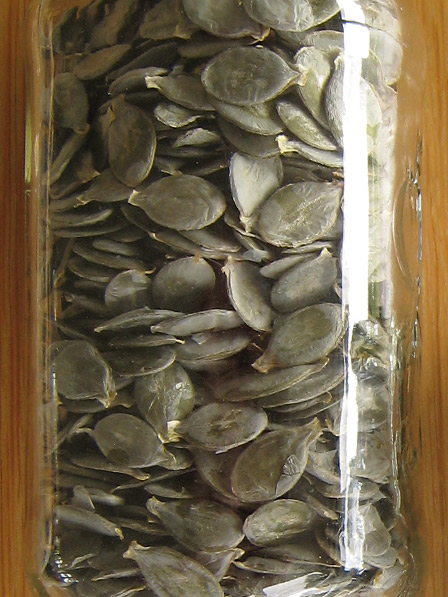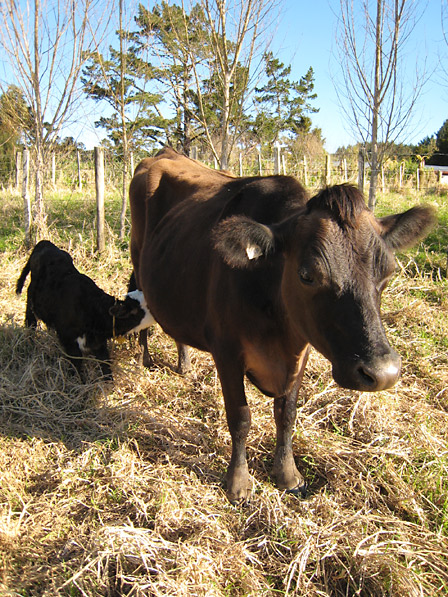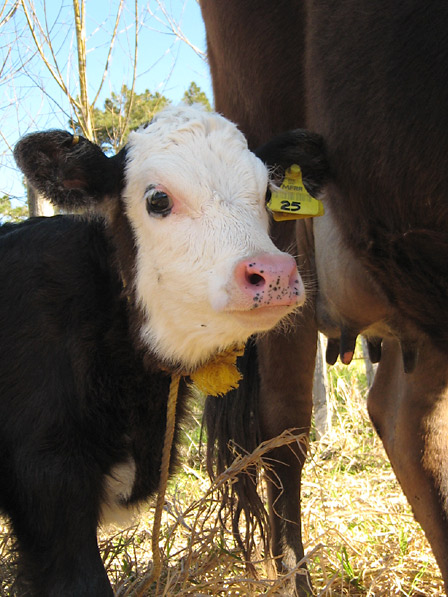Regular Cryptogon and Farmlet supporter, Eileen, sent $50. Thanks, Eileen.
Archive for September, 2007
Farmlet Reader Contributes $50
Wednesday, September 5th, 2007Dried Pumpkin Seeds
Tuesday, September 4th, 2007A while back, we decided to purchase an electric dehydrator. This was a tricky decision for us, intent as we are on cutting back on electricity use. We decided to get the electric dehydrator because it is much more energy-efficient than our electric oven when it comes to drying food. Ideally, we would use the sun for drying extra food, but in a humid and changeable climate such as this, open-air solar dehydration is difficult or impossible much of the time. I have seen designs for solar dehydrators that would work here, at least on fine dry summer days. It would be fun to experiment with one of these at some stage. Also, once we install a wood-burning stove in our kitchen-living room (yes, this step is on our medium-term “to do” list), we will be able to use it to dehydrate food, as well as for cooking and drying laundry during the winter. In short, we hope we will be able to cut down our use of the electric dehydrator as we implement further improvements here on the Farmlet. In the mean time, it seems like a relatively energy-efficient method of preserving and preparing certain kinds of food.

Austrian Hull-Less Pumpkin Seeds
Once the dehydrator arrived, our first project was to dry the Austrian hull-less pumpkin seeds that we grew last year. (We attempted to dry the first of these in the sun late last summer, and ended up having to finish them in the electric oven when the weather changed.) We were relieved to find that all but one of the pumpkins were in fine condition, despite many months of storage. It took quite a while to pick all the seeds out of the twelve pumpkins we had saved, but it was gratifying to see the quantity of plump green seed yielded from each fruit. We washed and soaked the seeds overnight in brine, before spreading them on the dehydrator trays. We were pleased to note how quickly they dried (a few hours at 60 degrees centigrade).
Now Kevin and I are both enjoying these tasty and nutritious treats. We look forward to growing more of these delicious seeds in the garden this summer.
A bit more information about the dehydrator:
*We purchased the dehydrator second-hand off Trademe (New Zealand’s equivalent of Ebay). I was able to get a good deal on one with a broken lid, since one of my cousins happens to have a spare lid for this kind of dehydrator.
*It is a “Harvest Maid” dehydrator (the 1,500 watt model), in good condition other than the lid! It can work at temperature settings up to 70 degrees centigrade.
*On my cousin’s advice, we got one with lots of trays. We will give some of these to her in exchange for the lid! Having more trays will allow us to dry more items at once, for greater energy efficiency. Slicing the food nice and thin will also help cut down on electricity use.
There are a number of other dehydrator projects that we are hoping to try when the time is right. We’ll let you know how they work out.
Coco and Calf
Sunday, September 2nd, 2007Dear Coco was very sad to have lost her own calf, and wasn’t at all impressed with the substitute calf that we offered. As noted in a previous post, we had to separate the two from the other cows and calves, so that they could be alone to work on their relationship.

Feedies
Kevin and I have also been going down to the cow paddock to make sure young Henrietta Hamburger was getting a feed from Coco. We hoped that as the days went by we would be able to be less and less involved in the feeding time, and that Henrietta would eventually be getting fed without any input from us. Alas, after a week or so of supervised feeding, Coco was still being very stroppy and mean to the calf, and we feared the two were going to remain dependent on our presence at feeding time. Disappointing, but we wanted to keep Coco in milk, and reasoned that it was still easier for us to supervise feedings for the calf than to milk Coco out ourselves all the time. Still, even as the days went by, we never gave up hope that the pair might eventually manage to bond.

Life is good when “Mummy” doesn’t kick me in the head
Finally, yesterday evening, Kevin noticed that Coco’s teats didn’t look muddy as they usually do. Hmm. . . Henrietta Hamburger was lying in the grass down by the fence, looking well-fed and satisfied. Were we imagining things? Kevin went and brought the calf over to Coco for feeding. Surely, if she were hungry, the calf would have come over on her own?? We watched as the calf approached Coco. Rather than doing her usual desperate dive for the udder, she wandered up and stood casually by Coco’s head. We waited for Coco to commence her usual calf-bullying behaviour — head-butting the calf into the fence and suchlike. Instead, the calf received a gentle motherly lick and a friendly nuzzle.
You can imagine how delighted we felt as we returned from the cow paddock. That evening marked a real turning point. We are still keeping a close eye on the situation, but it now seems that the calf is able to feed off Coco without our presence. The only drawback: We will now have to separate the calf from Coco when we want to milk her for ourselves. Not such a big deal compared to supervising all the feedings!
On the milk front, we are happy to report that all is well. Coco’s mastitis seemed to clear up immediately, and we have seen no more signs of trouble. Still, we do not use the milk from the quarter that was infected, and will not do so for a good while. Coco is becoming very accustomed to going into the stall to be milked, and Kevin is becoming an increasingly proficient milker. We are enjoying lots of creamy Jersey milk. It’s wonderful to be able to use Coco’s milk to make Caspian Sea Yoghurt, kefir and other treats. So far, we have not made any butter (we’ll get to that next), but we have used some of the cream to make a delicious dessert treat of “panna cruda” — a cold dessert of lightly sweetened raw cream set with a little gelatine. Yum!